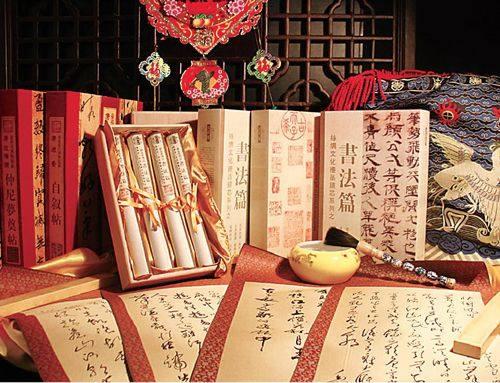丝绸文化的新生
2012-04-29戚永晔
戚永晔



2012年9月24日,一场名为“天堂丝绸?武林衣秀”的时装走秀在杭州西湖文化广场举行。流光溢彩的走秀中,来自杭州的丝绸时装吸引了很多来宾的注意。在座不少中外朋友说:没想到丝绸也能做得那么“时髦”。
作为丝绸最早的发源地之一,自古以来,杭州一直承载着丝绸人对丝绸文化的理想与期望。但是,随着时代的进步,越来越多的纺织产品正在取代费工费时、成本不菲的丝绸。如何打造自己的产业文化,成了诸多丝绸企业今天必须面对的洗礼。那么,杭州的丝绸产业,又在新时代的浪潮里,走出了怎样的情境?
“走出去”培养丝绸高端人才
屠红燕,这位今年才逾不惑的年轻企业家,被许多媒体誉为“丝一般的女人”“丝路修行者”。出生于丝绸世家的她,如今执掌杭州丝绸行业“旗舰级企业”之一的万事利集团。在别人眼里,她了解丝绸产业的脉络、懂得丝绸营销的方略,是典型的“家学渊源”。但她却说,如今的一切,是来自于“走出去”的结果。
时间倒回到1989年。那年下半年,杭州市政府针对当时的丝绸行业,提出了“四大调整”内部结构的构想,即:丝绸产业结构和企业布局的调整,产品和原料结构的调整,丝织装备结构的调整和开发,人才结构的调整和开发。
“四大调整”过程持续了四年多,到了1993年,杭州丝绸产业达到了历史上前所未及的巅峰。其中:工业总产值达312900万元,主要产品产量桑蚕丝达746.5吨、绸缎9890.49万米、印染绸13665万米,全年实现利润11318万元。
而屠红燕恰巧在那个年代从深圳大学经济管理系毕业,在人才培养优惠政策的鼓舞下,她和许许多多那个年代的年轻人一样,踏上了异国求学的道路。
在国外期间,屠红燕做过车工、缝纫工、技术、设计,很苦很累。但同时看到了老外们对企业的忠诚和敬业,也见识了精细化管理的重要作用。回想求学生涯,她说:“在日本,每个女孩子都会拥有一套和服,而和服的面料是用丝绸制作的,造价不菲,这可能是她们一生中唯一的奢侈品。丝绸在国外会让女人一生珍重,为什么到国内却变成了廉价的代名词?为什么发源于中国的丝绸文化却不能在本土发扬光大?”
今天,包括屠红燕在内的那批年轻人,都已成为杭州丝绸界的栋梁。
其实在那之后,杭州对于丝绸产业人才“走出去”的培养一直没有停止——2007年,一个名为“中国杰出女装设计师发现计划”的报道见诸杭州各大报刊,杭州市政府宣布,从当年开始,每年选拔6名女装设计领军人才赴欧洲进行为期一至两年的专业培训,费用予以全额资助,该计划将实施十年。
“为什么要下如此决心?”我把问题抛给了杭州市丝绸与女装产业发展领导小组办公室主任赵纪来,他的回答是:丝绸的生命力在于款式和设计,而一流的服装设计师和一线服装品牌大多在欧洲。所以打造“大腕”级中国女装设计师的培训之地,自然也选在了世界上拥有较高知名度的法国高级时装公会学院、意大利欧洲设计学院。
达利(中国)有限公司总经理、杭州丝绸行业协会会长费建明对此说:“政府都如此重视服装设计人才的培养,作为企业,该如何下大功夫、花大本钱,为自己的未来投资?”
把国外优秀设计师“请进来”
法籍华人赵菁是个典型的“80后”姑娘,喜欢玩微博、喜欢吃“口水鸡”。2007年她从意大利欧洲设计学院毕业后来到杭州,受聘于一家丝绸企业担任设计师,但平时大部分时间呆在自己的工作室里,做着相对独立的工作。虽然生在法国长在法国的她中文说得不太利索,但被问及为什么要来杭州从事丝绸服装设计,赵菁的回答还是思路明晰:“这里有适合我的成长空间,企业给了我很大的宽容度。而且我喜欢杭州的丝绸,这是一种表达力很强的原材料,是世界其他地方的设计原料无法相比的。”
赵菁不是个例。目前,在杭州众多的丝绸企业里,有一大批优秀的中外设计师进行创作,他们有灵感、有激情,也有相当的个人实力,对杭州丝绸产业的发展起到了非常重要的作用,推动着杭州丝绸定位差异化和时尚化的步伐。
2001年,杭州市提出了打造“女装之都”的战略决策。2001年11月9日,市政府发出关于成立杭州市女装发展领导小组的通知,同年12月25日,市政府召开女装产业发展工作会议,确立了女装产业作为杭州都市工业的战略地位。2005年11月4日,中共杭州市委、杭州市人民政府又出台《关于弘扬“丝绸之府”,打造“女装之都”的若干意见》,为杭州丝绸女装产业的进一步发展竖立了一座新的里程碑。
据资料统计,目前杭州有丝绸女装企业超过2000家、上规模的200余家,自主品牌350多个,数量占全国的一半。每年的销售产值达200亿元,从业人员近20万。杭州还在前不久成立了女装产业联盟,通过社会各方面资源的整合,结合产业发展的实际,从产业研究、品牌推广、市场拓展、国际交流、人才发现、创业创新、产业宣传、形象推广8个方面开展工作,通过各种渠道为杭州赢来不少老外的青睐。
此外,还有以达利(中国)有限公司为代表的外资企业,以凯喜雅、万事利、金富春、喜得宝为代表的丝绸女装企业,以蓝色倾情、浪漫一身、秋水伊人为代表的杭派女装企业,以及一大批小型作坊式的服装加工企业,它们共同开创了杭州丝绸女装的新天地,丝绸女装产业出现了前所未有的繁荣景象。
时尚走秀博取中外眼球
如果说杭州丝绸产业的“走出去”和“请进来”把这个本来是“夕阳产业”的行当变得朝气四射,那么以“杭州时装周”为代表的各类交流展示平台,还进一步刺激了国内外消费,拉动了丝绸经济回暖,带动了丝绸产业回升,推动了丝绸产业结构优化。
闻文元现任杭州市西湖国际博览会办公室节庆处处长,是自2002年以来,西博会传统项目—“天堂丝绸 武林衣秀”杭州时装周走过10年的见证人之一。10年中,荟萃“天堂丝绸”与“杭州女装”的杭州中国丝绸城和武林路时尚女装街每年都会携手举办流光溢彩的时尚走秀和表演,吸引了越来越多老外的目光。
闻文元告诉我,杭州时装周每年都有不少老外专程前来观看和购物,杭州丝绸,就是他们最重要的目标之一。而且时装周期间展示的那些丝绸,不少都是美国、法国、加拿大等国一线设计师和杭州本土优秀企业的手笔。“每年的闭幕式上,还会有不少来自加拿大、墨西哥等国的超模进行T台走秀,配合各国音乐的现场演奏,现场演绎杭州丝绸。”
今年的杭州时装周,邀请中国首席职业模特马青、单靖雅等领衔现场走秀,展现杭州丝绸最优雅的魅力。还有英国国际知名设计师Nathan Jenden及个人同名自创品牌首次华丽亮相,少不了杭州丝绸元素浸染其中,用中西方的碰撞展现日益走向国际化的杭州丝绸的新风采。
(本文照片由作者拍摄、提供)
Silk Renaissance
in Hangzhou
By Qi Yongye
The time was September 24, 2012; the venue was West Lake Culture Square; the event was a silk fashion show and the event was part of Hangzhou Fashion Week. As models walked the catwalk and displayed, spectators wowed, feeling amazed by the beauty and luxuries of silk, an ancient fabric whose manufacturing originated thousands of years ago around Hangzhou, the capital of eastern Chinas coastal Zhejiang Province. Today, Hangzhou testifies to its ancient silk honor by being home to China Silk Museum.
Hangzhou used to be a silk production powerhouse and declined through war years and political chaos throughout the 20th century. Thanks to the reform that started in the late 1970s, the citys silk industry has staged a spectacular comeback. It is not an easy comeback. As silk is a costly time-consuming material to make, many manufacturers struggle with costs and competition. The city has adopted many effective measures to bring about the silk renaissance and manufacturers have adopted many new measures to stay competent on the silk market.
Foreign Experience
A new generation of entrepreneurs and designers with overseas education and industrial experience are the most important contributors to the comeback of the silk industry in Hangzhou. Tu Hongyan, age 40, is described by the media as a pilgrim on Silk Road. Born into a family engaged in silk business for decades, she is now at the helm of Wensli Group, the flagship manufacturer of the citys silk industry. Wensli thinks it a great honor to have made silk dresses for 2008 Beijing Olympic Games. Some people believe her understanding of silk industry and her bag of marketing tricks are due to the business sense that runs in her family. She disagrees and says she owes her success to studying abroad.
In 1989, the city government came up with a four-point adjustment plan to revitalize the citys silk industry. The adjustment went on for four years. The citys silk industry flourished. Tu Hongyan graduated as a business management major during this key period. She went abroad for a hands-on experience in foreign business. In those years, she did a full range of jobs in fashion business: she worked sewing machines and she designed. The experience transformed her. Today, Tu and many with similar experience abroad have grown up to be the pillar of the silk industry of Hangzhou. Moreover, the city has kept sending new talents abroad to absorb advanced technology. In 2007, the government launched a citywide project: six fashion designers for womens dresses were chosen for special training in Europe for one or two years and the city footed all the bills. The project of annual selection and overseas training is still on.
The going-out strategy has injected fresh blood into the citys fashion and silk industry.
New Talents, Marketing Differentiation
Zhao Jing, a Chinese French and a typical girl born in the 1980s, came to Hangzhou and worked as a designer for a silk business in Hangzhou after she graduated from a design college in Italy. Asked why she works in Hangzhou, she answers in not very fluent Chinese: “I can grow up here as the company lets me do whatever I want. Moreover, I love silk made in Hangzhou. The material is more expressive than any other fabric I find anywhere else.”
Zhao is not an exception. A large group of excellent Chinese and foreign designers are now working for fashion and silk businesses in Hangzhou. Their passion, inspiration, and individuality help Hangzhous fashion and silk industry grow and compete on the domestic and international market.
Hangzhou City implemented a strategy of turning the city into fashion capital in 2001 and adopted preferential policies for the prosperity of the citys fashion industry.
Latest data indicates that Hangzhou now boasts more than 2,000 silk and fashion businesses including large-size manufacturers. These businesses promote themselves through 350 brands. The industry employs about 200,000 people and sells products worth 20 billion a year.
Since 2002, Hangzhou Fashion Week has been part of the annual West Lake Expo, witnessing the rapid growth of the silk and fashion industry of the city. This year, Chinese supermodels were engaged to show off latest designs. At the closing ceremony, supermodels from Canada and Mexico also walked the catwalk. Nathan Jenden, a British fashion designer, made his China debut in Hangzhou Fashion Week in 2012.
